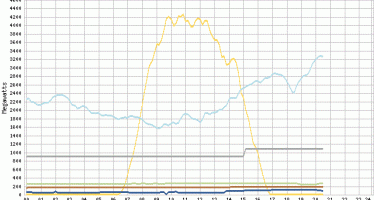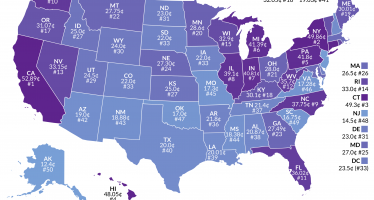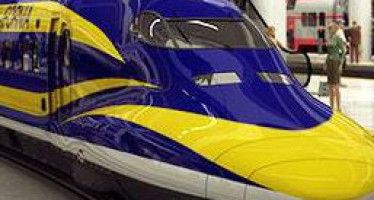Experts question legality of cap-and-trade for high-speed rail
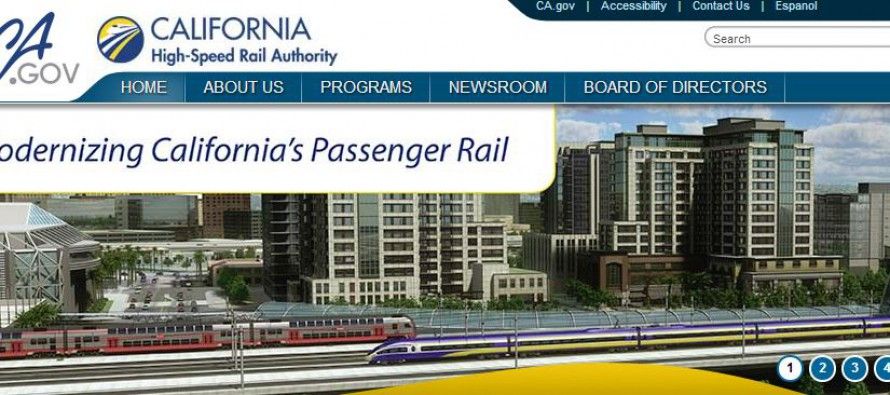
Editor’s Note: This is Part 3 of a series looking in depth at the latest hearing in the state Senate on California’s high-speed rail blueprint. Part 1 is here. Part 2 is here.
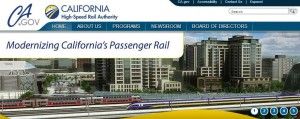
California’s high-speed rail project has problems in many areas, as this series has noted. A special problem, examined here, concerns using cap-and-trade funds for the project.
In his January budget proposal for fiscal year 2014-15, which begins on July 1, Gov. Jerry Brown sought $250 million in the next budget cycle for the high-speed rail project. In the future, he also wants to take one-third of the money from the state’s quarterly cap-and-trade auctions of greenhouse gas emission credits, which are being conducted by the California Air Resources Board.
The governor’s May Revision to his budget will be released around May 14. It will be interesting to see what revisions it makes to his cap-and-trade proposal for high-speed rail.
The March 27, 2014 hearing of the Senate Transportation and Housing Committee reviewed the 2014 Draft Business Plan and evaluated the project’s potential for success.
Jeremy Fraysse
At the committee hearing, Jeremy Fraysse of the Legislative Analyst’s Office – YouTube here – confirmed that there’s a $21 billion funding gap for the California High-Speed Rail Authority. Looking at the 2014 Draft Business Plan and CEO Jeff Morales’ testimony, Fraysse said it’s unlikely that federal funds will be forthcoming or that more grants or private funds will be available.
Fraysse said that it appears the state must address the shortfall of funding, as detailed in a summary the LAO produced for the hearing, “Funding for the High-Speed Rail Project.”
Fraysse repeated the $250 million from the governor’s budget projected to come from cap and trade. And Fraysse added that, starting in 2016, the governor wants one-third of a cap-and-trade number that currently is unknown.
Fraysse said it’s unclear how much cap-and-trade funding actually will be available for the train project, therefore we can’t know if the funding from that source will be adequate. He calculated the CHSRA needs approximately $4 billion per year to complete the first leg of the project by 2021.
Fraysse said, “The LAO recommends that the Legislature require the Administration to come forward with the funding plan that details exactly how this deficit will be addressed and what the funding sources will be in each year to support the capital costs of the program.”
Lou Thompson
Lou Thompson, chairman of the Peer Review Group that examined the project, testified that the CHSRA continues to make progress on its business plan. “It covers the issues but it doesn’t change the question of whether we should go ahead with the project or not,” he said.
But he said all there is so far is a paper projections analysis, “It’s all about what we’re going to do, not what we have done.”
Thompson said there are two primary issues. One issue is the financial gap of $20.9 billion for constructing the Initial Operating Section from Madera to the San Fernando Valley. He also testified that, beginning in 2016, Brown wants to take one-third of the cap-and-trade auction proceeds.
But as with Fraysse, Thompson said the question remains,“One-third of what?”
That $20.9 billion gap partially could be filled by cap-and-trade funds. But Thompson said that, even at the highest amount, the LAO’s February estimate found that $15 billion is the best case scenario for cap-and-trade revenue from now through 2020. So even that would leave a $5.9 billion gap.
Thompson said that, even if the CHSRA receives the funding proposed from cap-and-trade revenues, there still would be a gap of $13 to $14 billion to finish the first operable segment from Madera to the San Fernando Valley.
Gary Patton
Gary Patton, an environmental attorney in Santa Cruz, testified about slicing out chunks of money for the use of the high-speed rail project:
“The use of cap-and-trade funding for HSR would be a misuse of this funding, and would mean diverting that funding from projects that would actually reduce carbon emissions to a project that will actually increase such carbon emissions over the next 30 years.
“There are many meritorious uses proposed for the use of cap-and-trade funds. We cannot afford to ‘waste’ money that should to good projects that will actually reduce [greenhouse gas] emissions by spending these limited funds on a project that won’t reduce emissions.”
Environment
The CHSRA published an environmental report attempting to show how environmental friendly the project will be.
Rita Wespi is the co-founder of Californians Advocating Responsible Rail Design, an environment group whose mission is about disclosure and proper process. She didn’t think the high-speed rail project should use cap-and-trade dollars. She testified about the carbon emissions used today to build the project:
“We’ve got to convey that carbon emissions saved today are worth more than the equivalent in, say, 30 years from now. Once a glacier melts, there is no going back. They will say that HSR is an investment in the future. This isn’t the same type of investment as money. How the state prioritizes its GHG [greenhouse gas] programs today has enormous consequences that cannot be fixed or undone.”
Resources
The Senate’s summary of the March 27, 2014 hearing is here:
The complete video of the hearing can be viewed at: Senate Video on Demand.
Related Articles
Solar crash ramped up CA natural gas power
Yesterday a problem struck California’s electricity system that wasn’t supposed to happen until at least 2015. Freak low-lying clouds
Sacramento hits the gas on driving taxes
Within a few years, California may choose to tax drivers by the mile. Taking up a controversial idea floated by the
Coalition backing CA bullet train is fraying
Both in California and Washington, D.C., backers of the state’s controversy-plagued $68 billion bullet-train project are coming off a rough

